Learn The Katana Sword Technique of Samurai and Ninja
Set out on a fascinating exploration of the ancient arts of the samurai and ninja through the lens of mastering the Katana sword technique.
As participants step into the world of legendary warriors, they will uncover the secrets of precision, discipline, and honor encapsulated in each sword movement.
From the intricate footwork to the fluidity of strikes, the journey towards proficiency in this revered skill beckons those seeking to unlock a deeper connection to history and tradition.
With each swing of the blade, a gateway to a realm of expertise and enlightenment awaits, promising a truly enriching experience for all who dare to take the first step.
Key Points

- Katana techniques encompass Iaido and Kenjutsu for deliberate, graceful movements.
- Samurai and Ninja history contributes to the legacy of Japanese martial arts.
- Training methods focus on drills, handling techniques, and advanced fluidity exercises.
- Mastery demands dedication, spiritual connection, and adaptability to modern combat styles.
Katana Sword Basics

Mastering the art of wielding a katana sword involves understanding its fundamental basics with precision and skill. Sword fighting with a katana is deeply rooted in traditional Japanese martial arts, requiring discipline and focus.
The practitioner must grasp essential techniques like drawing the sword (Iaido), striking (Kenjutsu), and defensive maneuvers. Each movement is deliberate, flowing seamlessly from one to the next, showcasing the fluidity and grace of the martial art.
The grip, stance, and footwork play crucial roles in executing strikes with accuracy and power. By honing these katana sword basics, one can lay a solid foundation for advanced techniques and combat strategies in the world of samurai and ninja.
History of Samurai and Ninja
How did the legendary figures of samurai and ninja shape the intricate tapestry of Japanese history and culture?
The history of samurai and ninja is rich and fascinating, filled with tales of honor, loyalty, and stealth. Here are some key points to consider:
-
Samurai traditions: The samurai were skilled warriors who served feudal lords with unwavering loyalty, following a strict code of ethics known as Bushido.
-
Ninja legends: Ninjas were masters of espionage and sabotage, employing stealth techniques and unconventional warfare tactics to achieve their objectives.
-
Cultural impact: Both samurai and ninja have left a lasting legacy in Japanese culture, influencing art, literature, and martial arts practices to this day.
Training Techniques and Drills
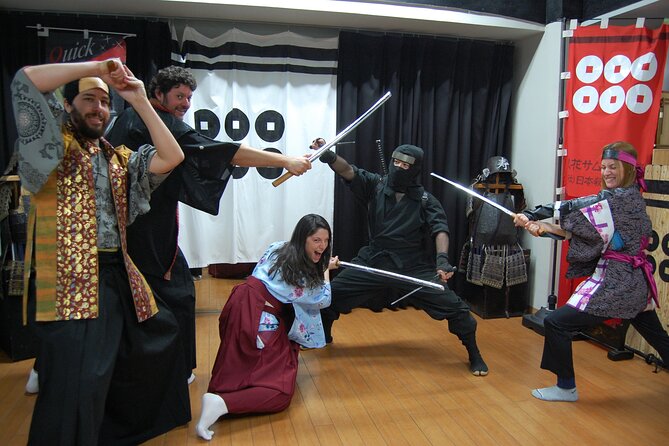
Training in the art of katana sword techniques involves rigorous drills and hands-on practice under the guidance of experienced instructors. Participants start with basic sword handling techniques, learning how to hold the katana correctly and move with precision.
As training progresses, students advance to more complex drills that focus on fluidity, speed, and accuracy in their movements. These drills help improve muscle memory and sharpen the mind’s focus during combat situations.
Practical Application in Combat
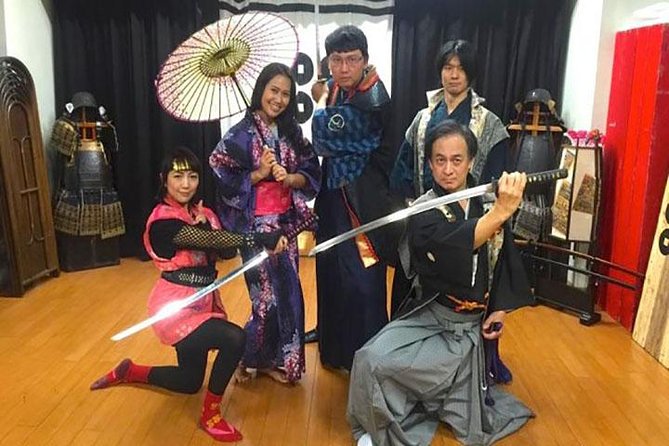
In the heat of battle, the practical application of katana sword techniques becomes a test of skill, instinct, and split-second decision-making for warriors trained in the art. When it comes to combat tactics and weapon handling, the following key points are crucial for success:
- Swift and precise strikes to incapacitate opponents efficiently.
- Fluid movements to seamlessly transition between offensive and defensive maneuvers.
- Mastery of footwork and positioning to outmaneuver adversaries and gain strategic advantages on the battlefield.
Mastering these combat tactics and honing weapon handling skills are essential for samurais and ninjas to prevail in the chaos of battle.
Mastering The Art
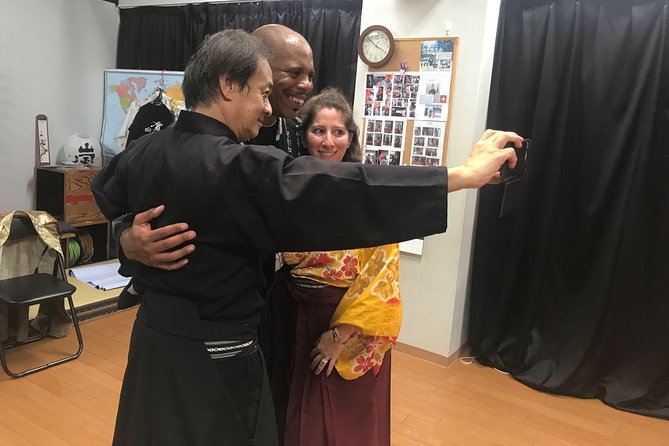
Mastering the art of katana sword technique requires dedication, focus, and a deep understanding of the principles behind each precise movement. It goes beyond physical skill; practitioners seek a spiritual connection with the sword, viewing it as an extension of themselves. This bond enhances their performance and mindset during practice.
In modern times, the traditional techniques have seen adaptations to suit different styles of combat and self-defense. Some practitioners incorporate technology, like virtual reality simulations, to enhance training. However, the core principles of respect, discipline, and precision remain at the heart of mastering the art of the katana.
Common questions
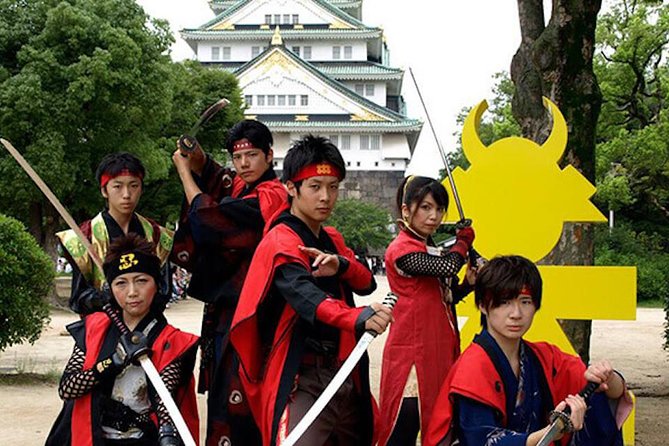
Are There Any Age Restrictions for Participating in the Katana Sword Technique Lesson?
Age restrictions are in place to ensure safety during the katana sword technique lesson. Participants must adhere to these guidelines. Safety is a top priority, and all individuals must meet the specified age requirements for this activity.
Is There a Dress Code or Specific Attire Required for the Lesson?
For the lesson, participants should wear comfortable clothing that allows freedom of movement. There’s no strict dress code, but it’s recommended to avoid loose or baggy attire. It’s all about being able to practice the sword techniques effectively.
Are There Any Specific Physical Fitness Requirements for Participating in the Training?
For participating in the training, individuals should have adequate strength training and flexibility for sword techniques. Cardio endurance and agility are also beneficial. These physical requirements ensure a fulfilling and effective experience during the lessons.
Can Participants Bring Their Own Equipment or Swords to the Lesson?
Participants cannot bring their own equipment or swords to the lesson. The session emphasizes sword etiquette and weapon safety, providing all necessary gear. The focus is on learning and practicing techniques under the guidance of experienced instructors.
Is There Any Follow-Up Support or Resources Provided After the Lesson for Continued Practice and Learning?
After the lesson, participants receive practice support and resources for continued learning and improvement. This includes guidance on refining techniques, access to online materials, and the option for follow-up sessions to enhance their skills further.
Last Words
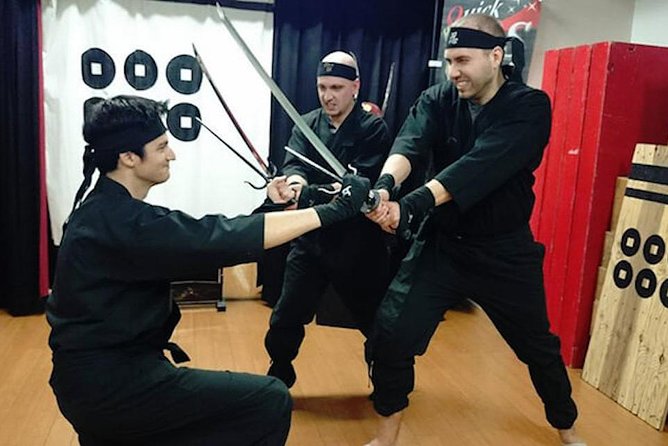
Enjoy the world of the samurai and ninja with the opportunity to learn the Katana sword technique. From the basics to practical application in combat, this experience offers a unique insight into ancient traditions.
Master the art of swordsmanship with the guidance of a skilled instructor and embrace the legendary practices of the samurai and ninja.
Don’t miss this chance to become a true warrior and create unforgettable memories on your journey through Japan.